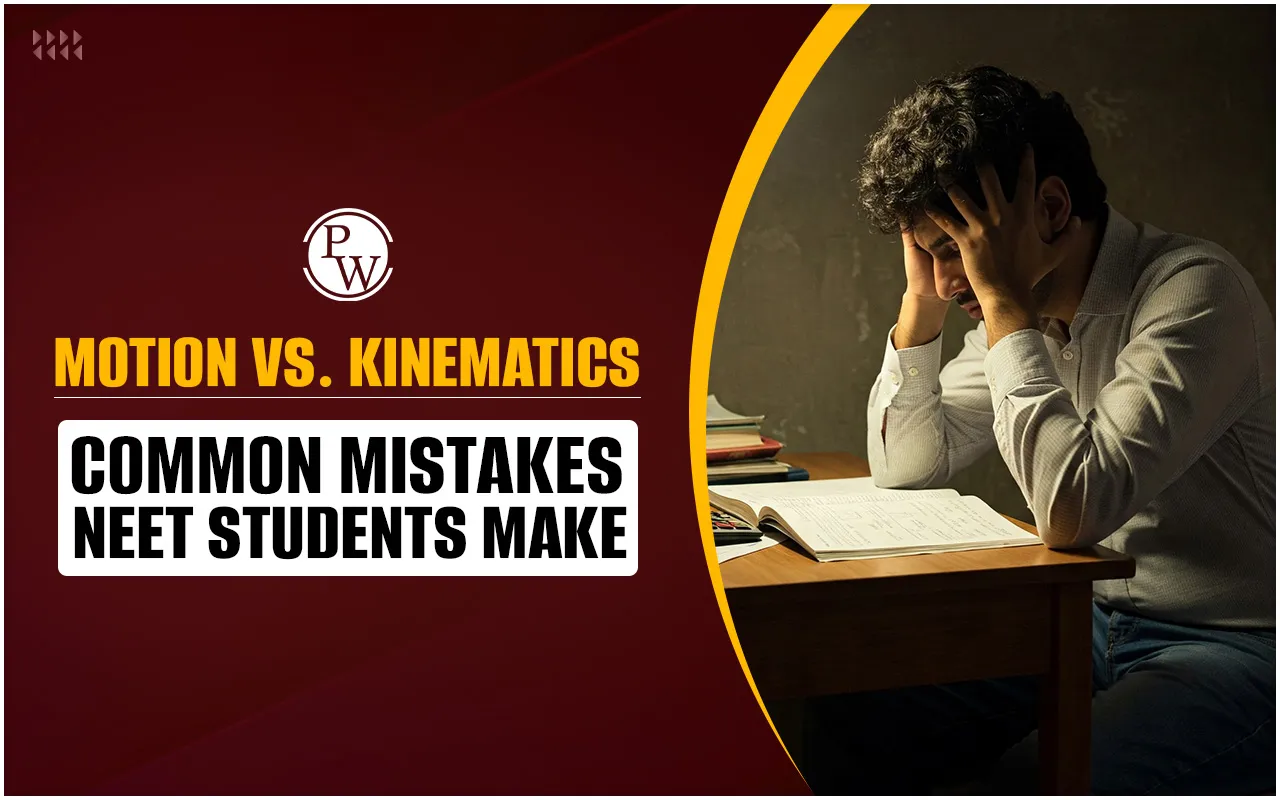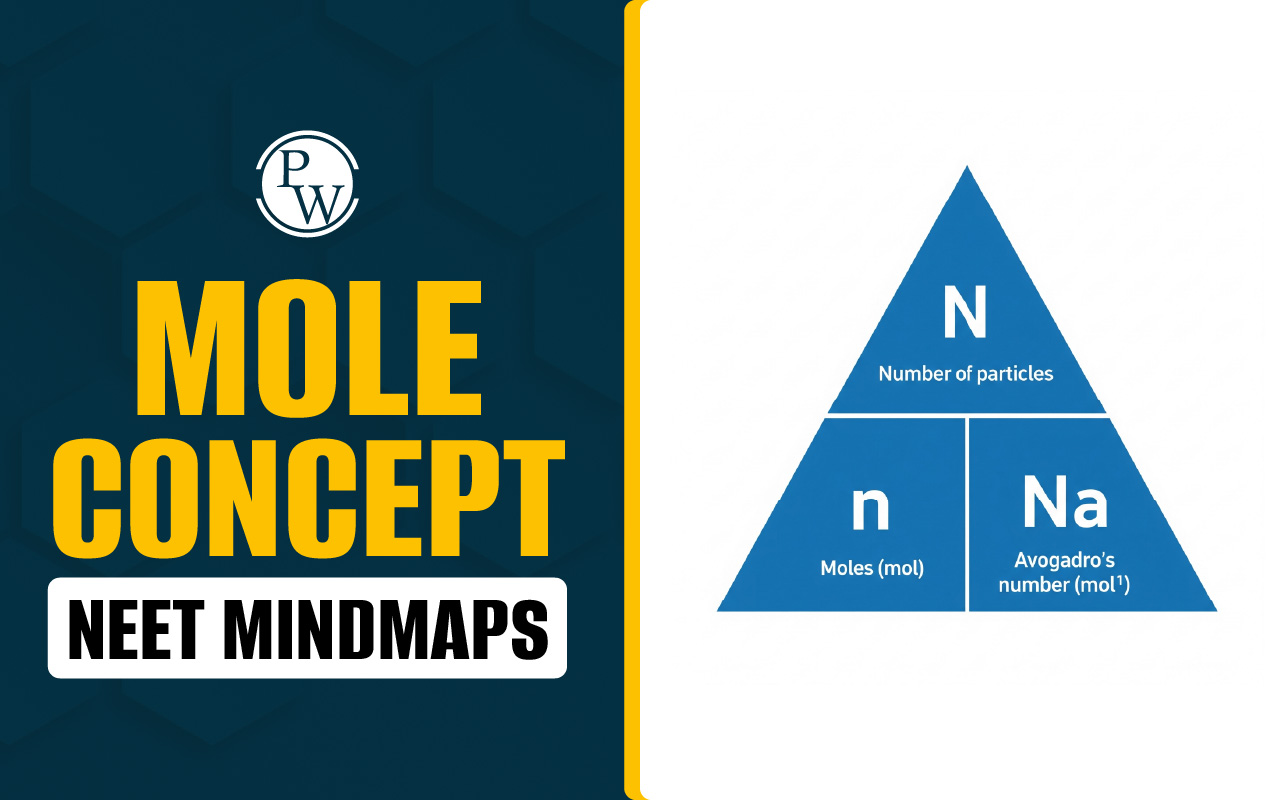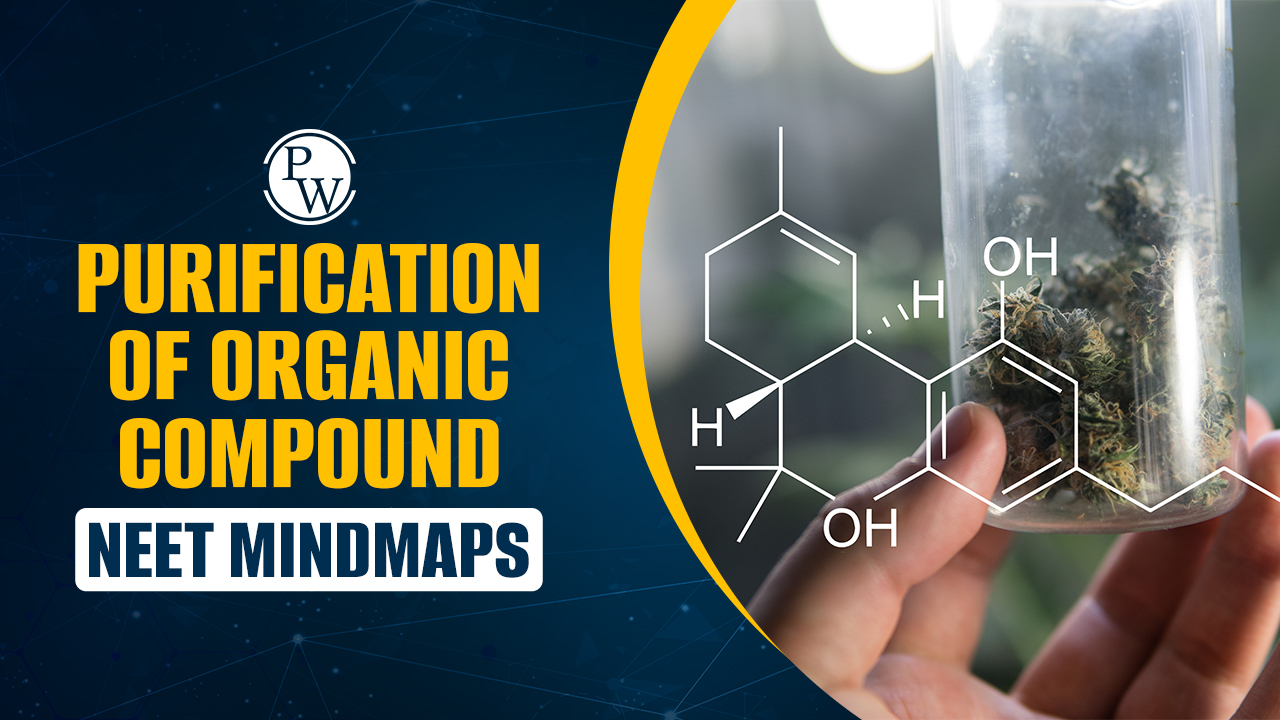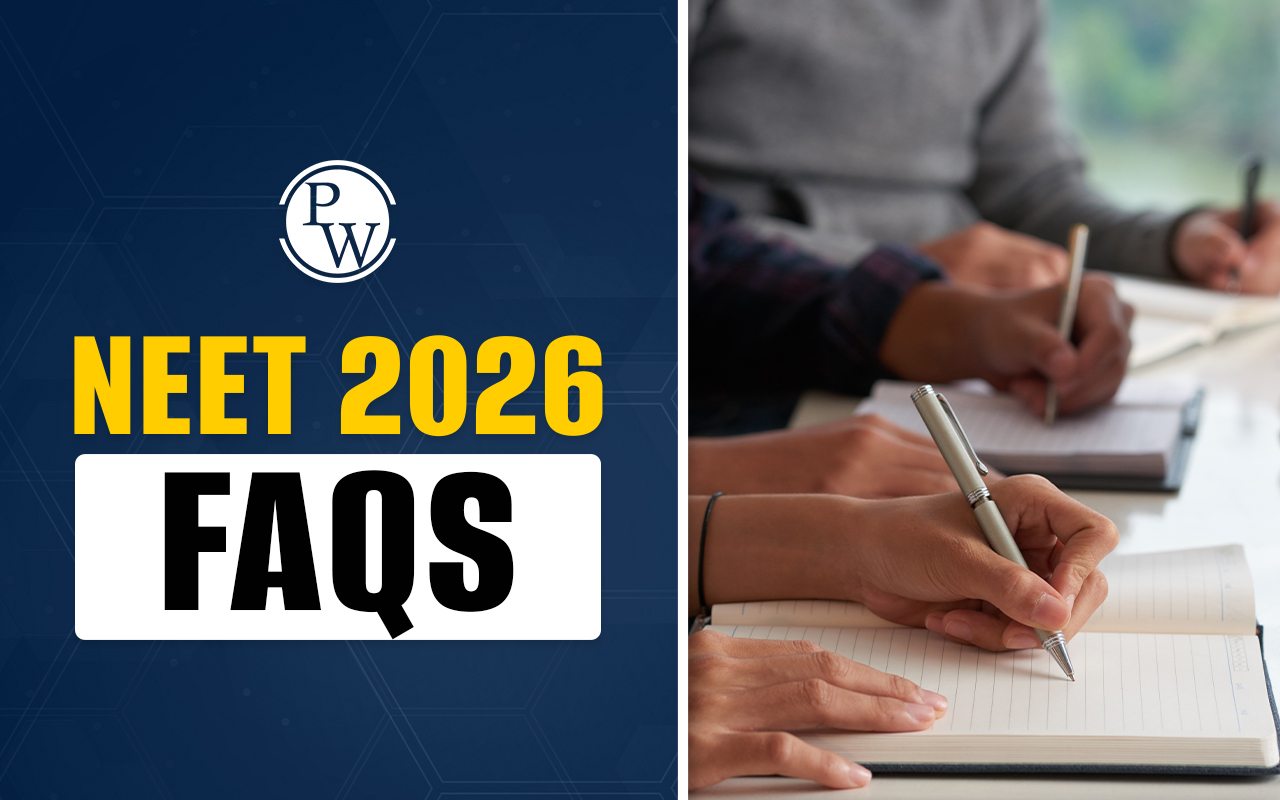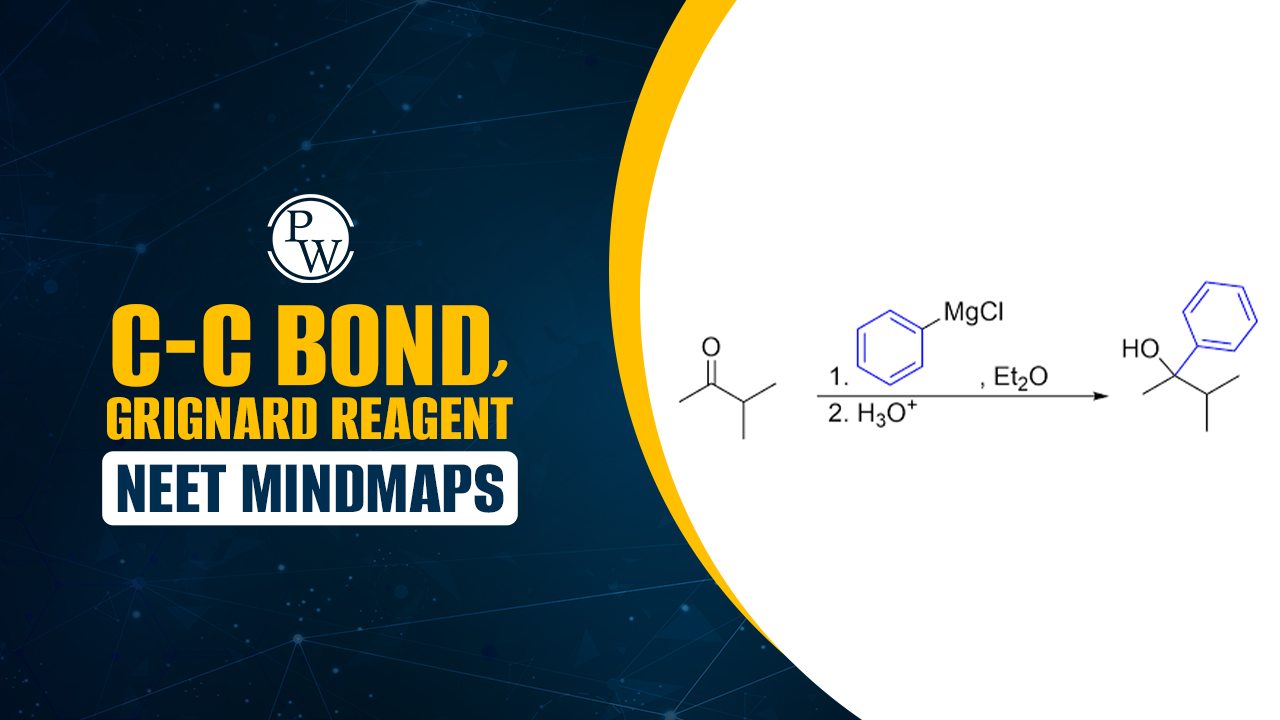
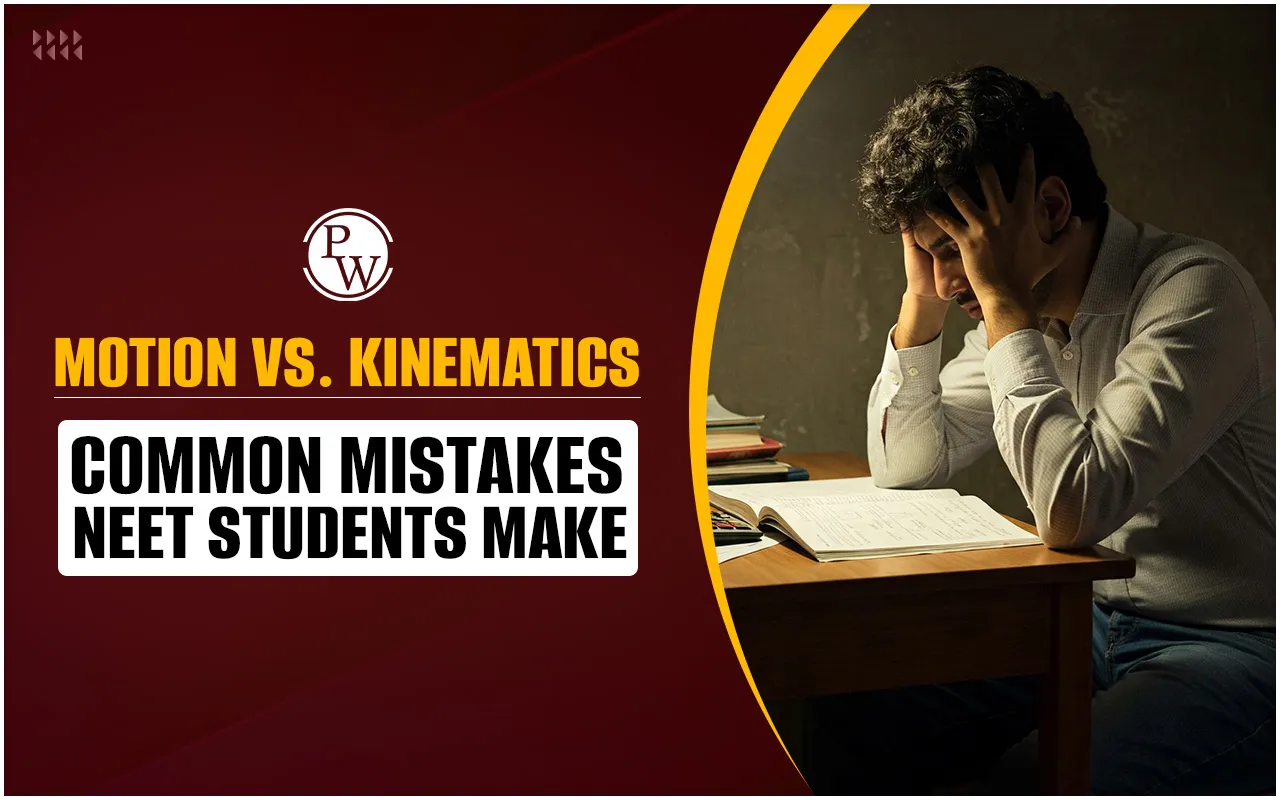
Motion Vs Kinematics: Understanding Physics is very important for the NEET exam. One topic that often causes confusion is the difference between motion and kinematics. These two words may sound similar and are both about things that move, but they are not the same.
We will learn what motion and kinematics really mean. We will also see the most common mistakes students make in this topic and how you can avoid them.
Explore - NEET Online Courses
What is Motion?
Motion simply means something is moving. When a person walks, when a bird flies, or when a car drives, we say these things are in motion. It happens when an object changes its place with time.
For example:
- A ball rolling on the ground
- A train going from one station to another
- Leaves falling from a tree.
Also Check:
- Motion in a Straight Line NEET Notes
- Law of Motion NEET Notes
- Rotational Motion NEET Notes
- Motion in a Plain NEET Notes
What is Kinematics?
Kinematics is a branch of Physics. It studies how things move. It does not talk about the reason why they move. It only focuses on the facts and numbers related to the movement.
In kinematics, we study:
Why Do NEET Students Get Confused?
Many NEET students get confused between motion and kinematics because both deal with things that move. Books and teachers also use both words together, which adds to the confusion.
Another reason is that kinematics uses words like speed and distance, which students already hear when learning about motion. But students must remember that kinematics is not just about seeing motion. It is about using formulas, values, and directions to understand how that motion works.
Download Last 5 Years NEET Previous Year Question Papers PDF
Free NEET PYQ PDF
Difference in Motion Vs Kinematics with NEET
The difference between motion and kinematics is clear once we understand their roles in physics:
|
Difference in Motion Vs Kinematics with NEET |
||
|
Aspect |
Motion |
Kinematics |
|
Definition |
Movement of an object from one place to another. |
Study of motion using mathematical tools like formulas and graphs. |
|
Focus |
What is happening (object is moving). |
How the object moves (speed, velocity, acceleration). |
|
Involves |
Change in position over time. |
Measurement and description of displacement, velocity, acceleration, and time. |
|
Purpose |
To observe or describe movement. |
To analyze and explain motion in detail. |
|
Use of Mathematics |
Minimal or none; just observation. |
Extensive use of NEET physics formulas and graphs. |
|
Force Consideration |
No focus on forces causing motion. |
Also does not consider forces (that is covered in dynamics). |
|
Example |
A ball rolling down a hill. |
Calculating how fast the ball is rolling and how far it will go in 5 seconds. |
|
Relation to NEET |
Basic understanding needed for concepts. |
Important for solving numerical problems in Physics. |
Common Mistakes in Motion Vs Kinematics in NEET Exam
Many NEET aspirants make several mistakes while learning about motion and kinematics. These mistakes are easy to avoid with the right understanding and practice. Here are some common errors:
Mixing Distance and Displacement
Distance refers to the total path an object travels, while displacement is the straight-line distance from the starting point to the endpoint, including direction. A common mistake is assuming that distance and displacement are always the same, but they can be different if the object changes direction. For example, if a person walks 5 meters forward and then 5 meters backward, the distance is 10 meters, but the displacement is 0 meters, since they end up at the same point they started.
Not Understanding Speed vs Velocity
Speed is how fast an object moves, but it does not include any information about direction. Velocity, on the other hand, is speed with a specific direction. For example, if a car moves at 60 km/h, it is moving at a certain speed. But if the car moves at 60 km/h to the north, it is moving with a certain velocity.
Using Formulas Incorrectly
Kinematics involves several key formulas, such as v = u + at, s = ut + ½at², and v² = u² + 2as. Students often mix up these formulas or use them in situations where they don’t apply. For example, using the formula v² = u² + 2as when time is given would lead to incorrect results. It’s important to choose the right formula based on the information given in the problem.
Ignoring Units
Using the wrong units for different quantities is another common mistake. For example, speed can be measured in meters per second (m/s) or kilometers per hour (km/h), and time is often given in seconds (s). When solving problems, always check that the units for each quantity are consistent. If necessary, convert them to the correct unit before applying the formula.
Forgetting Direction in Vectors
In kinematics, some quantities, like displacement, velocity, and acceleration, are vectors, meaning they have both magnitude and direction. It’s important not to ignore the direction when solving problems. For example, if an object is moving in a negative direction, the velocity should be negative as well.
How to Avoid Mistakes in Motion Vs Kinematics in NEET Exam
To avoid making these mistakes, there are a few simple strategies you can follow:
-
Make sure you clearly understand the definitions of key terms like distance, displacement, speed, velocity, and acceleration. It’s essential to know the difference between them, as this will help you solve problems more accurately.
-
Practice important questions of NEET and use diagrams whenever possible. Drawing the path or motion of an object helps you visualize the situation and understand the direction of movement. This is especially helpful when dealing with displacement and velocity.
-
It’s also important to regularly practice using the kinematic equations and learn when to use each one. Familiarize yourself with the different formulas and make sure to select the right one based on the information given in the problem.
-
Always pay attention to the units used in the problem. If the units are not consistent, convert them before applying the formulas. This will help ensure that you get the correct answer.
Physics Wallah provides Online Coaching for NEET for Class 11 & Class 12 students. Our courses are designed to help students to prepare for their exam. Dedicated teachers provide guidance and interactive sessions make learning easier and effective. Enroll Now!
Motion Vs Kinematics FAQs
Is motion and kinematics the same thing?
How do I remember vectors and scalar?
Why do NEET students find kinematics confusing?
How can I get better at solving motion and kinematics problems for NEET?
What is the right way to remember kinematics formulas?

